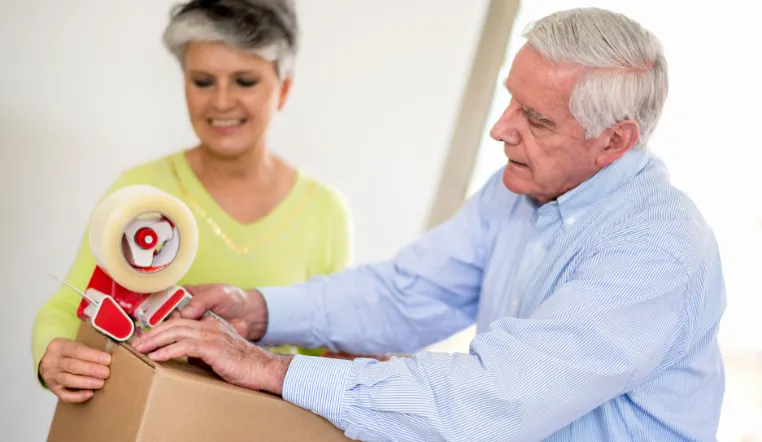When you’re preparing to make the move to an assisted living community, it can be a little intimidating to contemplate the downsizing process (also known as rightsizing). Many of us have lived in our homes for decades, which makes it difficult to imagine what our life will look like somewhere else.
However, there are a lot of benefits to downsizing and if you’re making the move to an assisted living community, you’ll want to have all the right tools before you dive in to make it as hassle-free as possible.
______________________________________
What Is Downsizing?
Downsizing is the process of reducing the current contents of your household, often in preparation for a move to a more compact living space. It involves evaluating your possessions to decide which still bring value to your life, and which have served their purpose and are ready to be set aside.
Downsizing is often called “rightsizing” because in many cases, moving to a smaller living space is the right fit for older adults’ lifestyles. Some of the benefits of downsizing include less stress over maintenance and upkeep, more leisure time, and less clutter.
How to Downsize for a Move to Assisted Living
Of course, downsizing is not without its challenges. When you go from a large home you’ve lived in for years to a smaller space, it can be difficult to decide what you should keep and what you should dispose of or donate. The question becomes, “What will I need? What can’t I part with?”
The first step you should take when downsizing is to obtain a floor plan and measurements of your new apartment. This will allow you to create a floor plan for where your belongings will be placed in each room.
Then, it’s time to start sorting through your belongings to decide which ones will make the transition. You’ll want to determine which belongings mean the most, but also which items will fit in your new home.
One tip: don’t start with sentimental possessions like old letters or family pictures when you begin to sort through your things. That will slow down the process as you’ll naturally want to spend more time poring over those items.
The next step is deciding what to do with the things that won’t be making the trip to your new apartment. Ask your family members if there are any items they would like. Whatever is left over can either be donated, sold, or properly disposed of.
If you’re looking for ideas of where to donate items, you might like this helpful list of charities and the items they accept from AARP.
What to Bring to an Assisted Living Community
One question many people have when making the transition to assisted living is “what will I need?” This is an excellent question—it’s the best way to determine what makes the cut.
We’ve compiled a packing list to help you get a feel for what you’ll need in assisted living. In general, the must-have items you will need include:
- Furniture for your bedroom, living area, and kitchen
- Bedding, pillows, and comforters
- Towels and washcloths for the bathroom
- Kitchen appliances such as a toaster, coffee maker, and microwave
- Televisions and remotes
- Clocks and alarm clocks
- Kitchen accessories including plates, bowls, cups, silverware, and cooking/baking utensils
- Cleaning supplies such as dish soap and laundry soap
- Lamps and nightlights
- Wall art and family photos
- Computer and/or tablet device
- Games, cards, and puzzles to enjoy with family and friends
- Radio and/or CD player
- Favorite snacks and drinks
- Seasonal decorations, such as wreaths for your exterior door
- Hobby supplies
- Books, movies, and magazines
- Closet hangers
And don’t overlook personal items and hygiene products, such as:
- Clothing for all seasons
- Robe, pajamas, and slippers
- Coats and outdoor footwear
- Leisurewear to participate in wellness activities
- Toiletries and personal care items
Our final suggestion is to set up a secure box for important legal and medical files. Use it to store documents and medical information like insurance cards, living wills, and a durable power of attorney.
_____________________________________
Related: The Emotional Side of Decluttering
_____________________________________
If you have any other questions about making the move to assisted living or are interested in learning more about one of our assisted living communities, feel free to contact us at any time.


